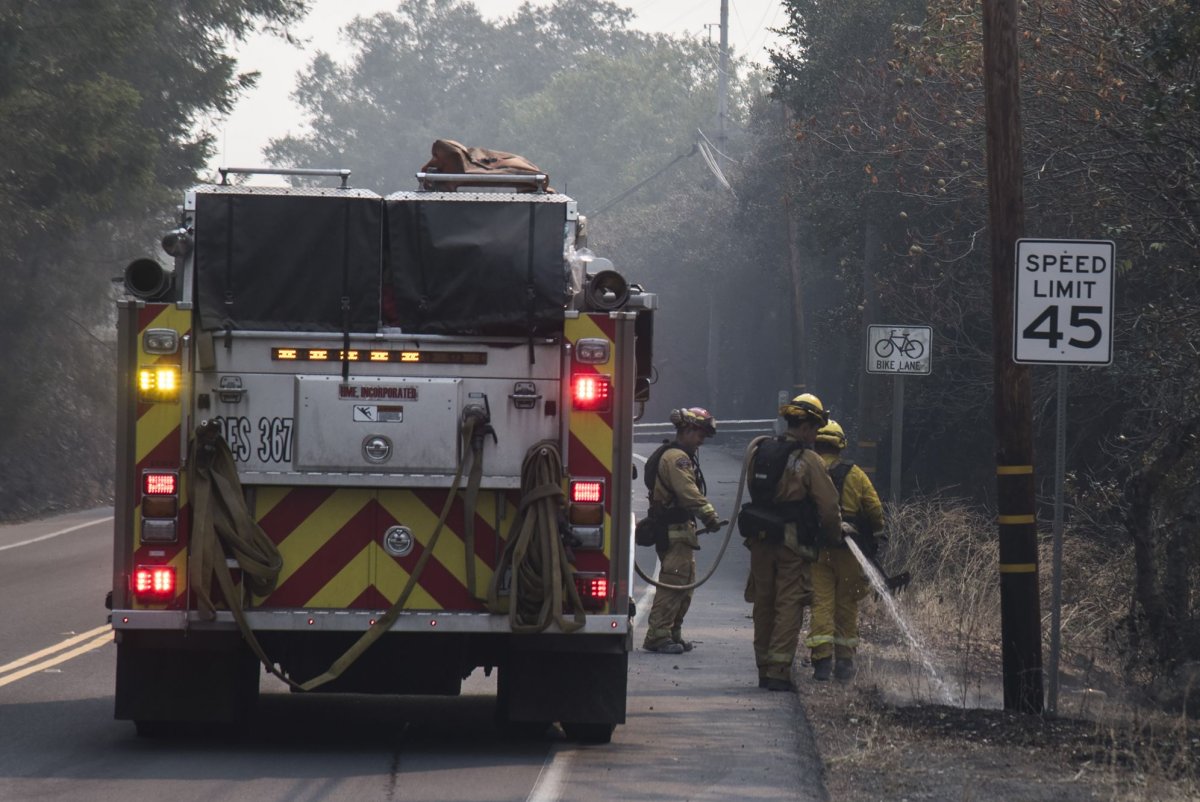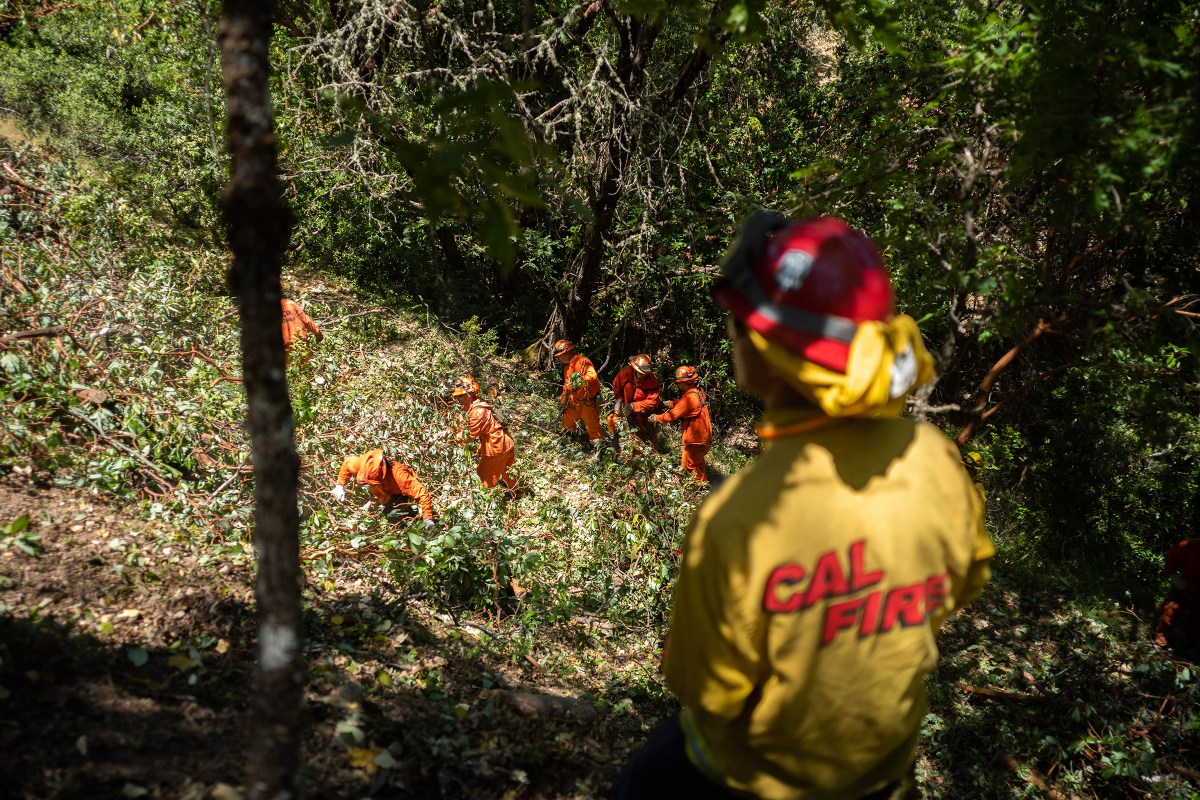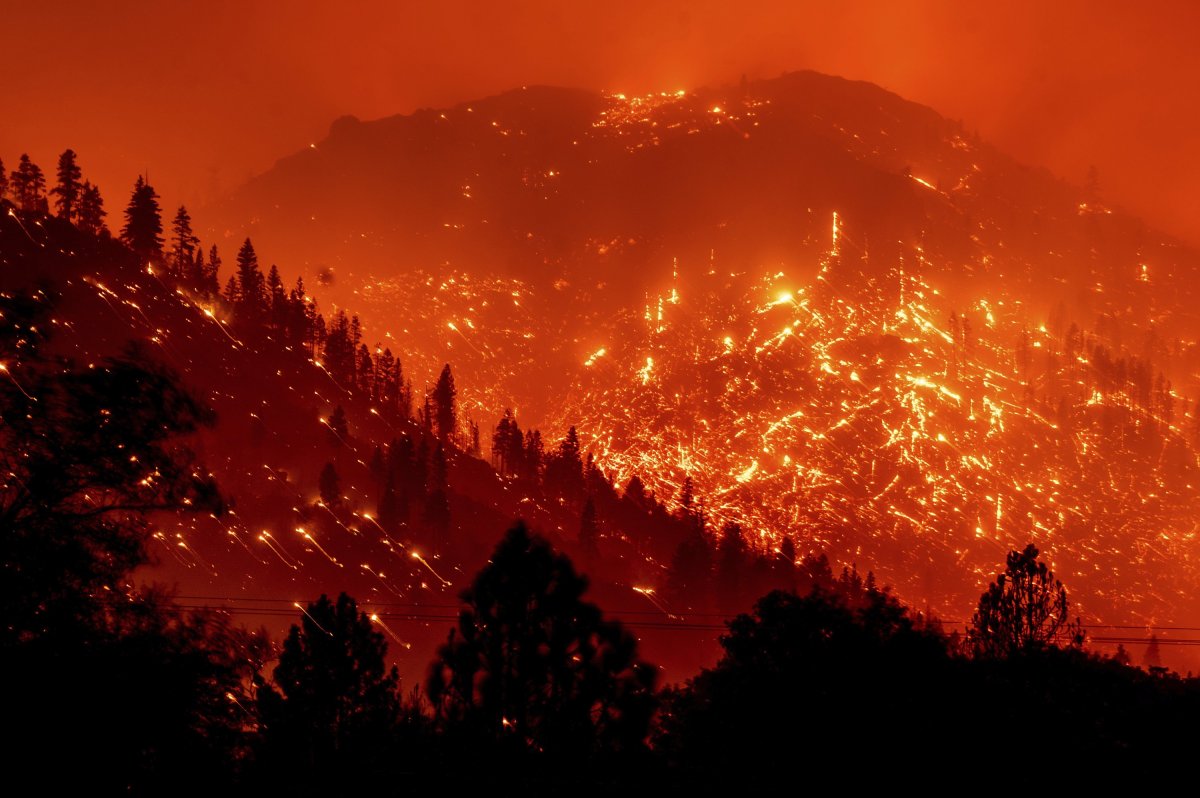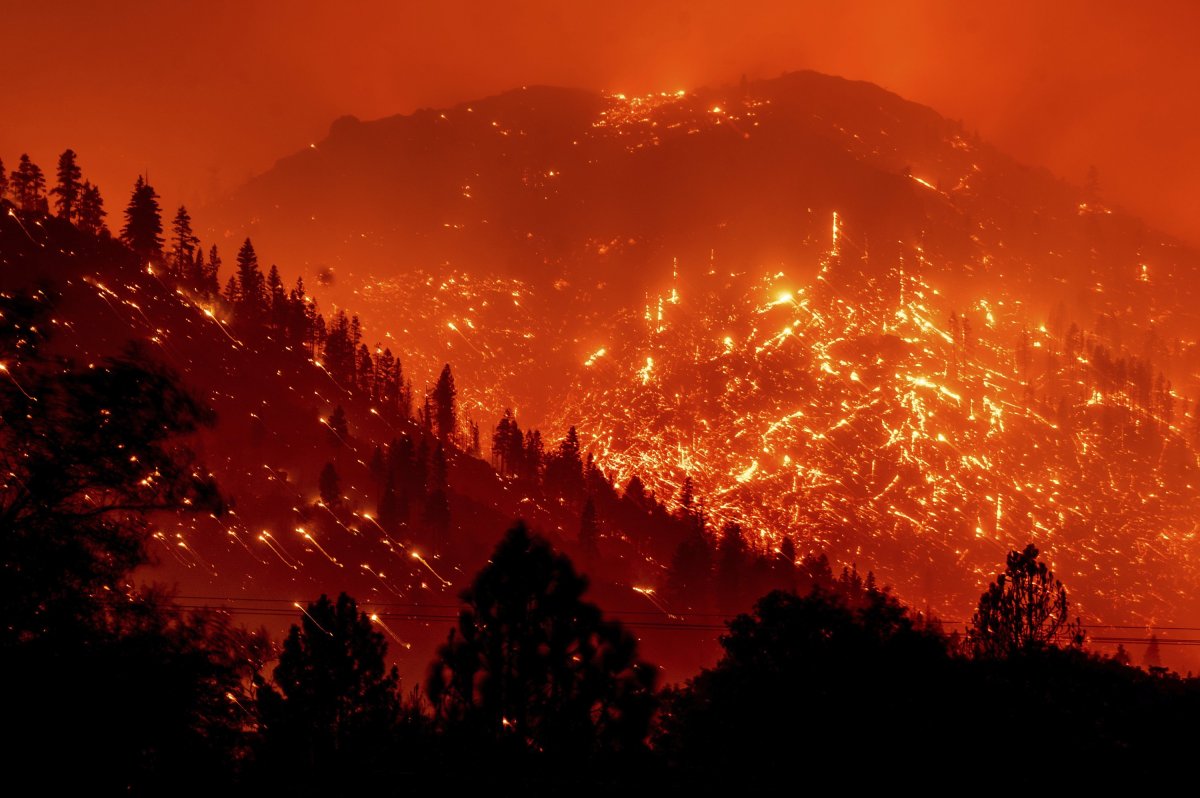Here’s how California has increased forest management and wildfire prevention is a multifaceted issue. California’s approach involves a combination of proactive forest management techniques and reactive wildfire response strategies. This includes thinning dense forests to reduce fuel loads, implementing controlled burns to clear underbrush, investing in advanced detection systems, and fostering community preparedness. The effectiveness of these measures varies across different regions and forest types, presenting both successes and ongoing challenges.
This
California’s tackling wildfires by boosting forest management, including controlled burns and thinning dense forests. This proactive approach contrasts with past strategies, but it’s inspiring to see similar large-scale environmental projects elsewhere, like the ambitious work described in this article about Allies & Morrison picked for ‘groundbreaking’ transformation of a significant area. Learning from these diverse approaches is key to improving wildfire prevention and forest health across the state.
article explores the various methods California employs to combat wildfires, from large-scale forest management projects to community-based initiatives. We’ll examine the successes, the setbacks, and the ongoing efforts to protect California’s valuable forests and its residents.
Increased Forest Thinning and Fuel Reduction Programs: Here’s How California Has Increased Forest Management And Wildfire
California has significantly ramped up forest thinning and fuel reduction programs to mitigate wildfire risk. These efforts involve a variety of methods, each with its own strengths and weaknesses, impacting cost, environmental considerations, and overall effectiveness. Understanding these nuances is crucial for effective wildfire prevention.
Forest Thinning Methods Comparison
Several methods are employed for forest thinning, each with different cost, environmental impact, and effectiveness profiles.
| Method | Cost | Environmental Impact | Effectiveness Against Wildfire |
|---|---|---|---|
| Mechanical Thinning (e.g., using machinery) | High, varies based on terrain and density | Moderate; potential for soil compaction and habitat disruption | High, creates wider spacing between trees, reducing fuel load |
| Prescribed Burning | Moderate to High, dependent on scale and complexity | Low to Moderate; can improve forest health, but requires careful planning and execution | High, effectively reduces underbrush and surface fuels |
| Hand Thinning | High, labor-intensive | Low; precise removal of targeted trees minimizes environmental disturbance | High, allows for selective removal of high-risk trees |
| Goat Grazing | Moderate; cost-effective in certain areas | Low; natural method, but effectiveness depends on terrain and goat population | Moderate; effective for reducing underbrush in specific areas |
Fuel Reduction Project Implementation
Implementing fuel reduction projects involves a multi-step process. Securing permits from relevant agencies is crucial, requiring environmental impact assessments and adherence to specific regulations. Funding often comes from a combination of state and federal grants, private investment, and local government allocations. Community engagement is essential, requiring transparent communication and addressing public concerns to ensure project acceptance and cooperation.
Successful Fuel Reduction Projects
The Angeles National Forest’s fuel reduction efforts have demonstrated a measurable reduction in wildfire intensity and spread in treated areas. Similar successes have been seen in projects within the Sierra Nevada, showcasing the positive impact of targeted fuel reduction on wildfire risk. Quantifiable data on reduced fire spread and intensity is usually collected post-fire event, providing valuable insights for future projects.
Challenges in Large-Scale Fuel Reduction
Logistical hurdles, such as accessing remote areas and managing large quantities of removed biomass, present significant challenges. Environmental concerns, such as habitat disruption and impacts on endangered species, necessitate careful planning and mitigation strategies. Public opposition, stemming from concerns about aesthetics or potential impacts on property values, requires effective communication and engagement to overcome.
Prescribed Burns and Controlled Fires
Prescribed burns play a vital role in reducing wildfire risk, offering a different approach compared to mechanical thinning. Understanding their benefits and limitations, as well as the meticulous planning involved, is crucial for their safe and effective implementation.
Prescribed Burns vs. Mechanical Thinning
Both methods aim to reduce fuel loads, but differ significantly in approach and impact.
- Prescribed Burns: Utilize controlled fire to remove surface fuels, promoting forest health. Can be cost-effective, but requires precise weather conditions and skilled personnel. Potential for unintended spread.
- Mechanical Thinning: Physically removes trees and underbrush. More expensive, but less susceptible to weather conditions and offers greater control. Can lead to soil compaction and habitat disruption.
Planning and Execution of Prescribed Burns
Careful planning is essential, considering factors such as weather patterns (wind speed, humidity), fuel moisture content, and topography. Safety protocols, including trained personnel, firebreaks, and contingency plans, are crucial. Environmental monitoring tracks smoke impacts and ecological effects.
Training and Qualifications for Personnel
Personnel involved in prescribed burns require specialized training, including wildfire behavior, fire suppression techniques, and safety protocols. Certifications and licensing ensure competency and adherence to safety standards.
Effectiveness in Different Forest Types

The effectiveness of prescribed burns varies depending on forest type, vegetation density, and climate. In some ecosystems, prescribed burns are highly effective, while in others, they may be less suitable or require modifications in techniques.
California’s boosted forest management involves more controlled burns and thinning, aiming to reduce wildfire risks. It’s a huge contrast to the chaos of a situation like the recent Car blown up in bomb scare near Regent Street ‘had its phone , highlighting how different types of emergencies demand different responses. Ultimately, proactive forest management is key to preventing catastrophic wildfires.
Improved Forest Health Monitoring and Early Detection Systems
Advancements in technology have revolutionized forest health monitoring and early wildfire detection. Integrating various data sources allows for proactive management and rapid response to emerging threats.
Advancements in Forest Health Monitoring
Satellite imagery provides broad-scale assessments of forest conditions, identifying areas with high fuel loads or signs of disease. LiDAR (Light Detection and Ranging) offers detailed 3D maps of forest structure, pinpointing areas at high risk of fire spread. Ground-based sensors monitor real-time conditions like temperature, humidity, and wind speed, providing crucial localized data.
Early Wildfire Detection System
A comprehensive system integrates satellite imagery (providing large-scale overview and identifying potential hotspots), ground sensors (monitoring local environmental conditions and detecting initial fire signatures), and weather forecasting data (predicting fire spread based on wind patterns and humidity). This integrated approach allows for rapid identification and prioritization of potential wildfire incidents. A visual representation would show a central control hub receiving data from various sources (satellite imagery displayed on a map, sensor data graphs, and weather forecasts).
Alerts are triggered automatically when thresholds are exceeded, notifying relevant authorities and enabling prompt response.
Data Use in Forest Management Decisions
Data from monitoring systems informs resource allocation, prioritizing fuel reduction efforts in high-risk areas. This allows for strategic deployment of personnel and resources, maximizing impact and minimizing costs.
Successful Early Detection and Rapid Response Strategies
California’s use of rapid response teams, equipped with aerial surveillance and ground crews, has demonstrated the effectiveness of early detection and intervention in containing wildfires before they escalate. The success of these strategies is largely attributed to the quick response times and efficient resource allocation.
Community Wildfire Protection Plans and Public Education Initiatives
Community-level involvement is crucial for effective wildfire risk reduction. Comprehensive plans combined with robust public education programs empower communities to actively participate in mitigating risks.
Key Components of Community Wildfire Protection Plans
| Key Component | Benefits | Challenges |
|---|---|---|
| Fuel Reduction Treatments | Reduces fuel load around homes and communities. | Cost, access to funding, community buy-in. |
| Home Ignition Protection | Creates defensible space around homes. | Community awareness and compliance. |
| Emergency Preparedness | Ensures community readiness for wildfire events. | Maintaining community engagement and training. |
Public Education Strategies

Public awareness campaigns utilize various channels, including workshops, educational materials, and social media, to disseminate information on wildfire prevention, preparedness, and evacuation procedures. Examples include “Ready, Set, Go!” campaigns and local fire department outreach programs.
Importance of Community Involvement
Community involvement is critical for the success of wildfire mitigation efforts. Local participation ensures that plans are tailored to specific needs and fosters a sense of shared responsibility.
Challenges in Implementing and Maintaining Plans
Maintaining long-term community engagement and securing ongoing funding can be challenging. Differences in priorities and perspectives among residents may also hinder the implementation and maintenance of plans.
Changes in Forest Regulations and Policies
California has implemented significant changes in forest management regulations and policies to address the escalating wildfire risk. These changes have broad implications for forest landowners, resource managers, and the state’s economy.
Key Changes in Forest Management Regulations
Recent policy changes have focused on increasing fuel reduction treatments, promoting forest health, and improving community preparedness. Specific examples include stricter building codes in wildfire-prone areas, increased funding for forest management projects, and regulations promoting defensible space around homes.
Effectiveness of Different Regulatory Approaches
The effectiveness of different regulatory approaches varies depending on the specific ecological context and community characteristics. Some areas have seen significant success with incentivized fuel reduction programs, while others have benefited more from stricter regulations on development in high-risk zones.
Impact on Forest Landowners and Resource Managers, Here’s how California has increased forest management and wildfire
Policy changes have placed new responsibilities on forest landowners and resource managers, requiring them to implement fuel reduction measures and comply with stricter regulations. This can impact their operational costs and management strategies.
Economic Aspects of Forest Management

The economic implications of wildfire prevention and management are substantial. Costs associated with fuel reduction, fire suppression, and post-fire recovery can be significant. However, proactive forest management can also generate economic benefits, such as creating jobs and stimulating local economies.
Outcome Summary
California’s fight against wildfires is a continuous evolution, adapting to changing climate conditions and evolving scientific understanding. While challenges remain – from logistical hurdles to public perception – the state’s commitment to proactive forest management and community engagement demonstrates a significant step toward mitigating wildfire risk. The ongoing development and implementation of improved technologies and collaborative strategies offer hope for a more resilient future, balancing environmental protection with the safety of its citizens.
FAQ
What are the economic impacts of these forest management practices?
Forest management involves significant costs, including thinning, prescribed burns, and monitoring. However, these costs are often offset by reduced wildfire damage, protecting homes, infrastructure, and the economy.
California’s stepped up forest management includes things like controlled burns and thinning out overgrown areas to reduce wildfire fuel. However, effective wildfire prevention requires coordinated efforts at all levels of government, which is why the recent news, as seen in this video showing Video shows Mayor Karen Bass refuse to answer L.A. fires , is concerning. Ultimately, successful wildfire mitigation depends on everyone doing their part, from state-level planning down to local responses.
How does climate change affect California’s wildfire risk?
Climate change exacerbates wildfire risk through prolonged droughts, higher temperatures, and increased wind speeds, creating conditions ideal for rapid fire spread.
What role do private landowners play in wildfire prevention?
Private landowners are crucial. Many participate in fuel reduction programs, but challenges exist in coordinating efforts across vast landscapes with diverse ownership.
